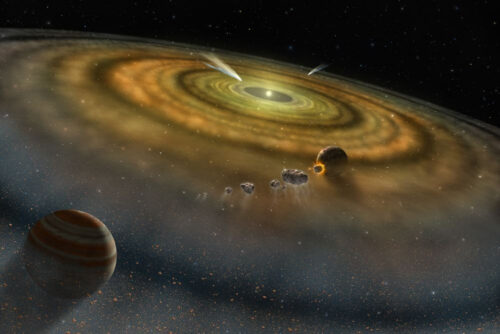
The presence of water on Earth has long intrigued scientists, and the search for its origins leads us back to the early days of our solar system.
Recent research has uncovered a group of water-rich asteroids located between Mars and Jupiter, shedding light on the delivery of water to our planet and the history of the solar system.
Geoscientists from around the world used advanced technology, including the NASA Infrared Telescope in Hawaii, to study these intriguing “low-albedo” or “dark” worldlets.
By analyzing the spectra of light reflected from their surfaces, the researchers gained insights into the chemical elements and minerals present on these asteroids.
Discovering Water-rich Asteroids:
Dr. Driss Takir, an astrophysicist at the NASA Johnson Space Center and the lead author of the study, explains that the astronomical measurements allowed the identification of Ceres-like asteroids, some as small as 100 kilometers in diameter, within a specific region near Ceres’ orbit.
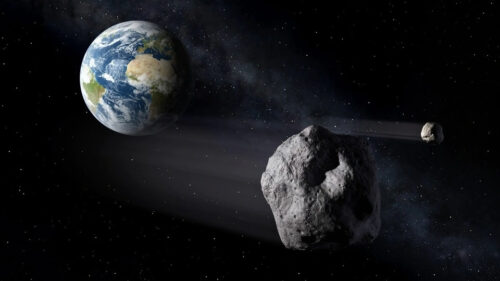
The infrared spectra of these asteroids suggest the presence of minerals originating from interactions with liquid water, similar to what has been observed on Ceres.
These dark asteroids provide valuable clues about the early stages of our solar system, acting as remnants of the building materials that formed the planets billions of years ago.
The Role of Asteroids in Earth’s Water Supply:
According to current scientific consensus, a significant portion of Earth’s water was delivered by smaller celestial bodies that collided and merged over time, eventually forming our home planet.
The water-rich asteroids in question contain water “inclusions,” such as fluid deposits within the rocks or hydrated minerals within their crystalline structures.
The collision and accumulation of these hydrated asteroids contributed to the growth of Earth, bringing along the water and minerals they contained.
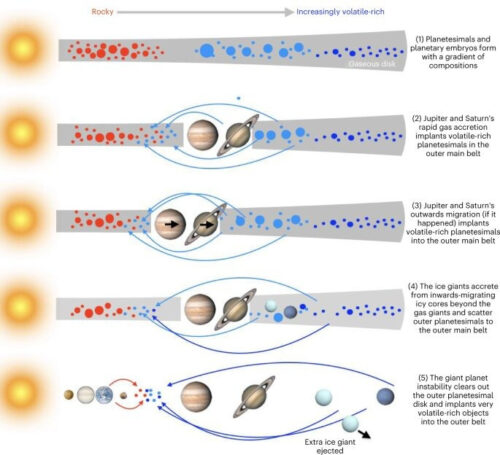
Porosity and Solar System Origins:
The newly discovered asteroids exhibit high porosity, indicating their primitive and porous nature.
These characteristics suggest that shortly after their formation, these asteroids did not undergo significant heating, maintaining their porous structure. This feature aligns with their origin in the outer regions of the solar system, where temperatures were lower.
The study’s findings highlight the water-rich qualities of these asteroids, reinforcing their status as remnants from the early solar system.
Insights into Solar System History:
The presence of Ceres-like asteroids in a concentrated zone within the outer Asteroid Belt holds valuable insights into the history of our solar system.
The formation of these objects likely occurred in the cold regions at the edge of the solar system. Gravitational disturbances caused by large planets, such as Jupiter and Saturn, altered the asteroids’ trajectories, ultimately leading them to their current location within the Asteroid Belt.
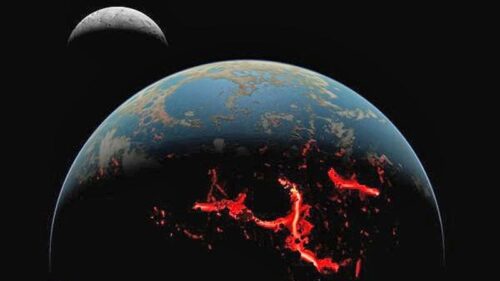
Ceres, a dwarf planet with water ice components, provides further evidence of the movement and migration of celestial bodies within our solar system.
The discovery of water-rich asteroids between Mars and Jupiter provides significant insights into the origin of Earth’s water and the broader history of the solar system.
By studying these dark asteroids and their mineral compositions, scientists gain a deeper understanding of the processes that shaped our planet and the distribution of water throughout the cosmos.
The primitive nature and porosity of these asteroids support the notion that they are remnants from the early stages of the solar system.
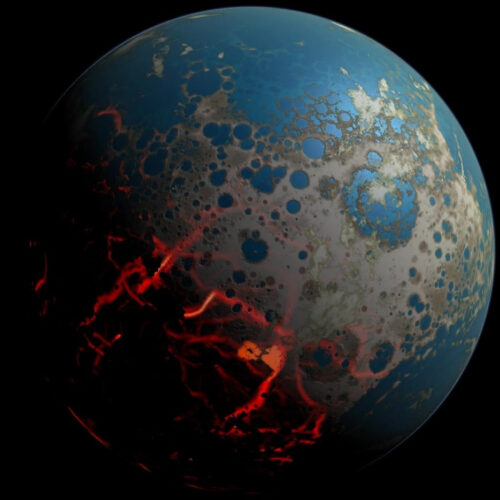
As research continues, these findings contribute to our evolving understanding of our own planet’s origins and the dynamic processes that have shaped the universe around us.
